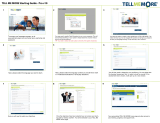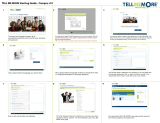
4 Securing your Chromebox and information
Device security is essential for protecting the condentiality, integrity, and availability of your information.
Standard security solutions and third-party software can help protect your device from a variety of risks, such
as viruses, worms, and other types of malicious code.
When you sign in to Chrome and enable sync, Chrome keeps your information secure by using your Google
Account credentials to encrypt your synced passwords. Alternatively, you can encrypt all of your synced data
with a sync passphrase. This sync passphrase is stored on your device and isn't sent to Google. For more
information on syncing your data, go to
https://support.google.com/chrome/answer/1181035?hl=en .
IMPORTANT: Some security features listed in this chapter might not be available on your device.
Table 4-1 Chromebox security options
Device risk Security feature
Unauthorized use of the device Power-on password
Viruses Antivirus software
Ongoing or future threats to the device Software updates
Unauthorized removal of the device Security cable lock
Securing your wireless network
When you set up your wireless network, always enable security features.
Backing up your software applications and information
All apps update automatically, and a record of your downloads and purchases is kept in the Chrome Store.
Google also saves your last synced settings automatically. If you must perform a recovery on your device, you
can log in with your Google account and automatically retrieve all of your settings, favorites, and apps.
HP recommends that you save important documents and les either to a USB ash drive, memory card,
external hard drive, or to Google Cloud™ storage. You can save your les to the cloud at any time by selecting
the Google Drive as your le-save location.
Recovering your Chromebox
If you want to give your Chromebox to someone else, reset owner permissions, or solve problems with your
account prole, you can clear all local user data by resetting your device.
NOTE: Performing a factory reset deletes all data stored on your device, including permissions, settings,
and user-owned les for all accounts. Resetting your device does not aect your accounts or any data synced
to those accounts.
1. Select the status area in the lower-right corner.
2. Select Settings, and then select Show advanced settings.
12 Chapter 4 Securing your Chromebox and information





















